Like many artists, American Realism painter Winslow Homer’s art mainly focused on a few recurring themes and topics. One such theme that is less talked about and largely under-appreciated, though, is his work involving the depiction of women.
Many of Homer’s most incredible paintings feature the involvement of female figures in one form or another. Although being a Realist painter who primarily focused on painting the daily affairs of life in 19th century America, much of Homer’s artwork also includes elements of Romanticism, Classicism, and not to mention, an abundance of gripping drama.
In terms of Homer’s paintings, including women, all these elements are present within as well as many subtler ones too. So, with that being said, let’s take a closer look at some of the female figures in Winslow Homer’s art and what makes them so significant.
Contents
Undertow (1888)
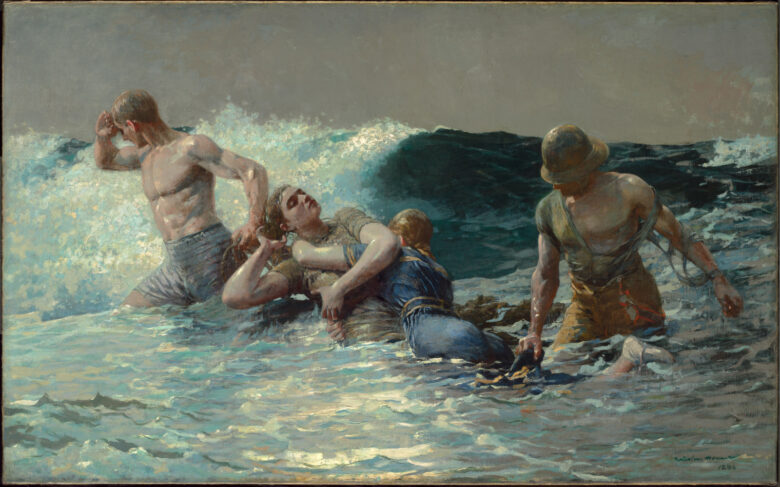
Source: clarkart.edu
Undertow is among Winslow Homer’s most acclaimed and beloved paintings by both critics and fans alike. In a sense, it embodies practically everything about the artist’s work that makes them so unique and noteworthy in terms of art history.
The painting itself showcases an ocean-themed scene, the likes of which Homer became so famous and so synonymous. There is arguably no other painter in history more associated with painting the sea than Winslow Homer.
Like many of Homer’s paintings, Undertow portrays an adventurous and daring scene, in this particular case, a rescue at sea. What makes this painting different from almost all the others, though, is that there is also a distinct impression of Classicism held within.
Both the two male rescuers and the two females in distress are depicted in a similar fashion to that of classical Greek sculptures. The men are brave and powerful, while the women are demure and graceful. The painting is like a Greek myth telling of the power of nature and the frailty of humanity.
The Life Line (1884)
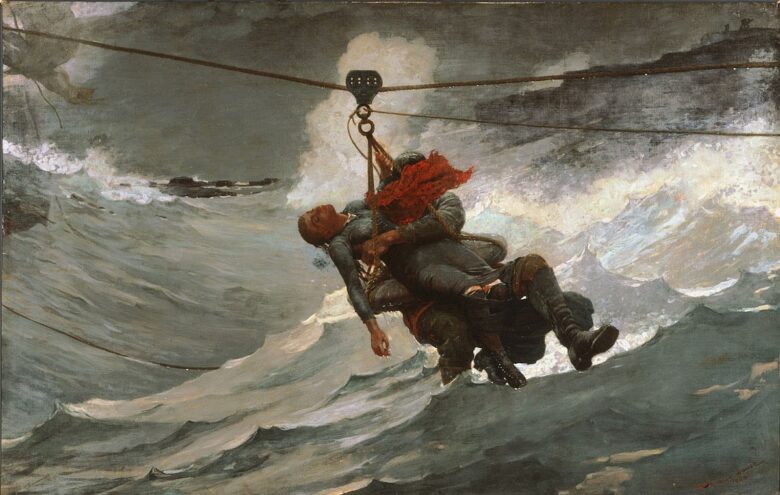
Source: en.wikipedia.org
The Life Line is another one of Homer’s most iconic, cherished, and epic paintings. Similar to the Undertow painting, The Life Line also depicts a highly dramatic scene of a life-or-death rescue from the deathly grip of the mighty and unforgiving sea.
In this oil on canvas painting, a woman is being rescued from a sinking ship out on the sea and is being towed back to safety by a rope line. This was a common method of sea rescue and the time, and Homer most likely got the inspiration for the painting from witnessing a real-life event.
The tone and color palette used is dark and macabre as a direct reflection of the seriousness of the situation. The woman being rescued appears to be unconscious, while the man carrying her across the line is being tormented by the weather and the waves. The painting has been regarded as another riveting example of the man versus nature paradigm.
Mending The Nets (1882)
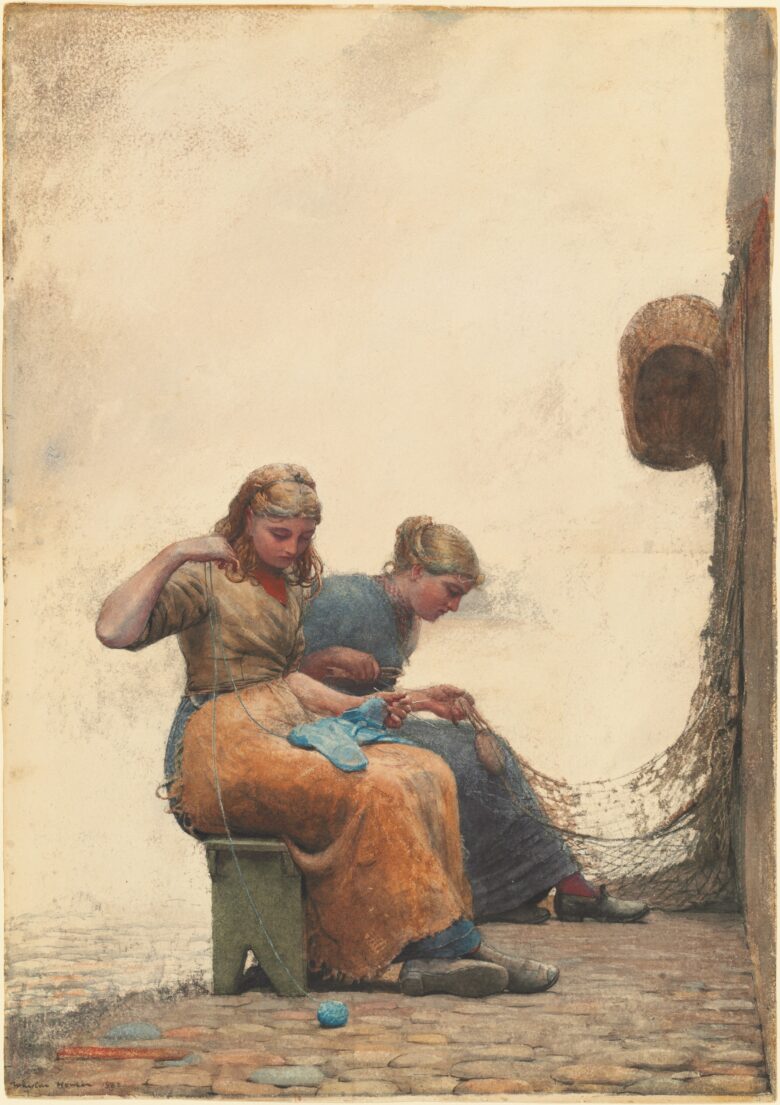
Source: nga.gov
As the majority of Winslow Homer’s illustrations, sketches, oil, and watercolor paintings can be seen as a sentimental chronicling of the times in which he lived, it is no surprise that the vital role women played in society was often a topic of the artist’s attention.
While many of Homer’s paintings showcased many of the aspects and routines undertaken by men at sea, Mending the Nets takes a look at the unseen side and highlights the part women played in the organizing and maintaining of the trade.
Painted using watercolors and graphite, a light and delicate tone accompanies the two women fixing the fishing nets. There is also a light impression of tranquility and peace within the composition, which was a common theme within Homer’s calmer, more slice-of-life pieces.
The Cotton Pickers (1876)
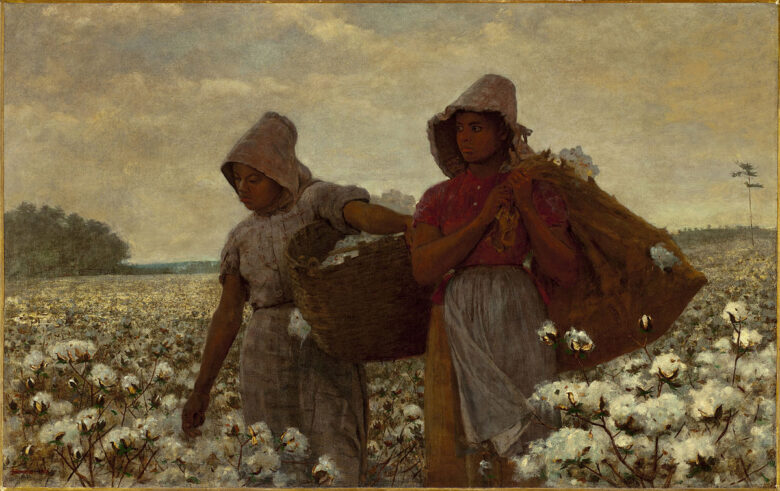
Source: en.wikipedia.org
Another aspect of 19th-century American life Winslow Homer was renowned for showcasing was the lives of the African American people of the time. This was even more true when it came to depicting African American women and the roles they played in the culture.
As most people know, most African people in America at the time were not treated fairly at all and, in many cases, were forced to work as slaves. As a result, they were subjected to working many hard labor jobs and were the victims of many injustices.
One job that remained synonymous with African American culture long after slavery was abolished in the United States was the job of cotton picking. As well as African men, African women also worked in the fields and farms of America, doing hands-on jobs.
This Winslow Homer painting of two African women working in the cotton fields is one of the most important and iconic in all of American art. The more you learn about Winslow Homer and his art, the more you see a focus on the strength of the human spirit against hardship and the positive aspects of humanity triumphing over the negative.
Children Under A Palm Tree (1885)
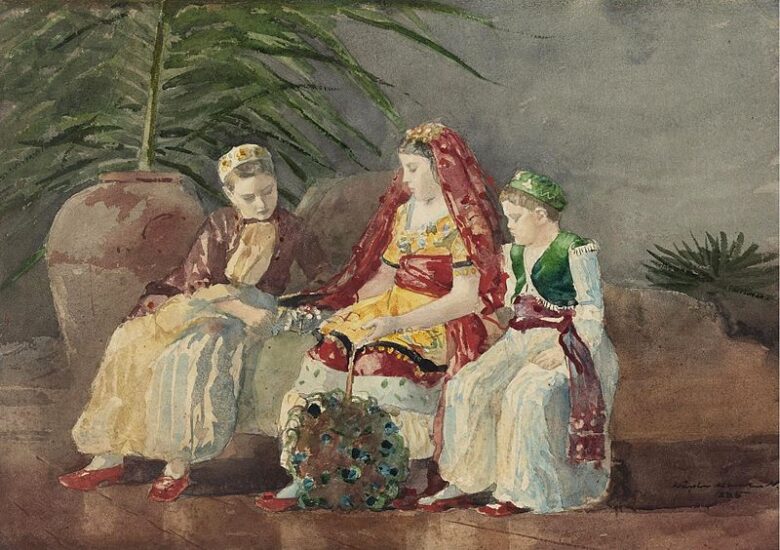
Source: en.wikipedia.org
Both women and children have often been used in painting as artistic symbols for the embodiment of purity and innocence. These symbols are two of the oldest expressions in all of art and appear in dozens of Homer’s splendid artwork.
Children Under A Palm Tree is quite a unique entry in Homer’s extensive collection. There are no major underlying themes expressed or deeper meaning to the three girls as they sit together under the palm tree. It is also much less realistic and more Impressionist in its composition.
Nevertheless, it is a charming piece of art and showcases the diversity of the artist. Homer painted many other similarly relaxed paintings like this one. Some others worth mentioning are The Fisher Girl and The Watcher.
Conclusion
These are, but a few of the many masterpieces Winslow Homer painted that had women as their centerpiece and/or central theme. As one of the most prominent painters of the period with an extensive body of work, you are sure to find a painting that moves you and speaks to your own heart and individual taste.
